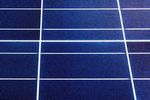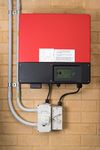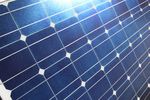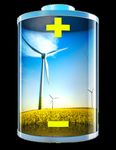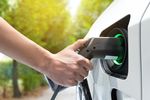Photovoltaic solar systems - introduction to Welcome to the PH Jones - For more infomation or to discuss your needs further please contact
←
→
Page content transcription
If your browser does not render page correctly, please read the page content below
Welcome to the
PH Jones
introduction to
Photovoltaic
solar systems
For more infomation or to discuss your needs further please contact
Ian Mather
Business Development Manager
Email: Ian.mather@britishgas.co.uk
Mobile: 07769 544627
www.phjones.co.uk
1THE PRINCIPLE
Photovoltaic solar systems convert light energy produced by the sun into direct current (DC) electricity. This electricity is then converted into
alternating current electricity and rectified to a voltage that is useable for your property. In the UK this would be 220-240v AC. The device that
converts the electricity from DC to AC and regulates the voltage is called an inverter.
Contrary to popular belief solar systems don’t have to face south although this orientation gives the best peak performance. Having an array
on the east and west elevations of a roof will give a more even power generation throughout the day.
INVERTERS STRING INVERTERS
Inverters come in three main
String inverters are the most common type of inverter
types, all are designed to achieve
found on solar PV systems. These are the original type of
the same result, however certain
inverter and the most cost-effective option. They connect
technologies have advantages
to the solar panels by chaining up the panels (called a
over others, including safety,
string of panels) and connecting the DC output of the
efficiency and future expansion
panels directly to the inverter. This design is ideally suited
being the advantages of certain
to installs where cost is a driver and the roof is simple with
designs. The three main types are:
no shading. The disadvantage of this design is that if one
panel in the string were to become fouled or shaded this
would not just reduce the efficiency of the affected panel, it
would in fact bring the entire string down to the reduced
efficiency of the affected panel.
2OPTIMISED STRING INVERTERS MICRO INVERTERS
Micro inverters are as the name suggests
Optimised string inverters work in much the same way as string inverters but
much smaller inverters and are designed to
have the addition of optimisers that connect directly onto the rear of each
support a single solar PV panel. They fix to the
panel. This technology gives two main advantages
back of an individual panel and convert the DC
electricity into AC of the correct voltage. This
1. Each panel is optimised at panel level meaning that if one panel were to be
gives them the same advantages of optimised
fouled or shaded only the impacted panel will lose efficiency. The other
inverters with an additional benefit of making
panels on the string will maintain their own individual optimum generation..
the systems modular. When a string inverter
2. Optimisers have the ability to shut down the voltage at panel level, this is a
system is designed regardless if it is optimised
major improvement in safety, as with a standard string inverter if you isolate
or not, the inverter is sized to the number of
the inverter and the sun is out every DC cable from the panels to the
panels so if the system were to be expanded
inverter remain live. DC electricity is considered more dangerous that AC
increasing the number of panels a larger or
electricity as it attracts rather than repels. If you were to touch an
second inverter would be needed. With a
unshielded live AC cable it is likely to give you a shock and repel you,
micro inverter-based system you can easily
sometimes across the room. If you were to put your hand on a live DC cable
increase the systems size at any point by
the direct current will cause your muscles to contract and grip onto the
simply buying the same number of extra micro
cable prolonging the duration of the shock. The inability to isolate the DC
inverters as you do panels. Micro inverters are
cables is a particular risk for works around these cables and to the fire
often the costliest inverter option
service, if they attend a fire at your property during daylight hours there is an
electrical contact risk even with the string inverter isolated. However, with
optimisers fitted when the inverter is shut down the DC cabling in the loft is
also reduced to a safe level by the optimiser on the back of each panel
improving system safety.
These units are usually slightly higher cost than a standard string inverter but
have improved efficiency and safety.
3PANEL TYPES
The two main types of solar panel are mono crystalline and polycrystalline both panels work by converting light energy
into DC electricity.
Poly crystalline panels have a blue appearance and are usually made up of rectangular shapes in the panel itself. The
efficiency of these panels is slightly less than that of mono crystalline panels with poly being approxomatley 17% efficient
and mono 20% meaning that you would need more panels to achieve the same output with poly panels. It is worth
noting that any cost saving on the panels themselves may be lost if using optimisers or micro inverters as the more
panels will mean more optimisers or microinverters.
Mono crystalline panels have a black or very dark blue appearance they also have rounded edges to each piece of the
panel, this can usually be seen if a white backing plate is used as you will see white diamonds where the corners of each
piece are rounded. Being a more efficient panel, you would need less panels for the same output system. This is an
advantage where using micro inverters or optimisers or where space is an issue. Poly panels are also slightly better in
lower light conditions making them better in areas with slight shading etc, although micro inverters and optimisers have
overcome this to a large extent.
PVT (photo voltaic thermal) is a hybrid solution combining solar PV and thermal panels. The advantage of this design is to capture the heat
energy from the sun at the same time as the light energy. This heat can then be used, with the main uses being to heat up a large body of water
like a swimming pool for example or to re charge a ground array in a ground source heat pump system. Recharging the array simply means
pumping the heat generated by the panels through the ground loop in the summer, increasing the ground temperature ready for heating
demand in the winter. Using this variant of panels with ground source systems can also reduce the number of bore holes needed for the
ground array, reducing installation costs for the ground source. Another advantage of solar PVT is that by removing heat from the panels by
pumping a glycol solution round them, also cools the PV part of the panel. Solar PV panels loose some efficiency above temperature of 25
degrees Celsius and cooling helps to keep them at optimal operating temperature.
3SYSTEM OPTIONS
Home batteries are becoming a popular option they allow any excess
electricity generated by the system to be stored for later use. Storing
the energy makes it available for the hours that the solar is not
generating. Batteries can connect to the solar system in two ways, the
FIXINGS
Sky hooks are the most common fixing used for
most efficient being to connect directly to a DC output on the inverter,
residential solar PV installs, they are a metal
this prevents any losses caused by converting to AC and then back to
angled bracket that secures to the rafters, the
DC for the battery, not all inverters have this option although it is
tile slides back over them and a mounting rail is
becoming more common. Batteries can also connect via AC, this is not
then secured to multiple sky hooks giving a
as efficient as connecting via DC although opens batteries up as an
secure system for the panels to mount to.
option for inverters without a DC output. Some batteries can also
support advanced optimisation such as demand response for
Replacement tiles with integrated mounts are
example.
designed to be used as a replacement for sky
EV (electric vehicle) charging points can also benefit from hooks, these completely replace the tiles where
the energy generated from a solar PV system. Some a mounting point is needed, then rails are
inverters can communicate with an EV charger to divert any secured directly to a factory fitted mounting
surplus electricity generated to charge the electric vehicle. A point on the tile. This is a more costly option
non-connected EV charger fitted to a property with solar PV than sky hooks but can be preferential for roofs
can still use the electricity generated by the panels, but won’t with delicate tiles.
have the smart integration to maximise the amount of
surplus electricity used to minimise the energy drawn from Frame systems can also be specified to mount
the grid. panels to a flat roof or in a field etc. The frames
can be adjusted to provide the optimum angle
Hot water cylinder links allow your hot water cylinder to for the panels to capture as much light energy
heat up via the immersion heater, by diverting surplus from the sun as possible
energy generated from going back to the grid. Some of
these systems can even modulate down to 100w ensuring It is worth noting that when installing solar onto
even the smallest amount of energy generated can be a roof it is advisable to have a structural survey
captured to reduce the homes carbon emissions and energy carried out on the roof to ensure the roof can
use. support the additional loadYou can also read





